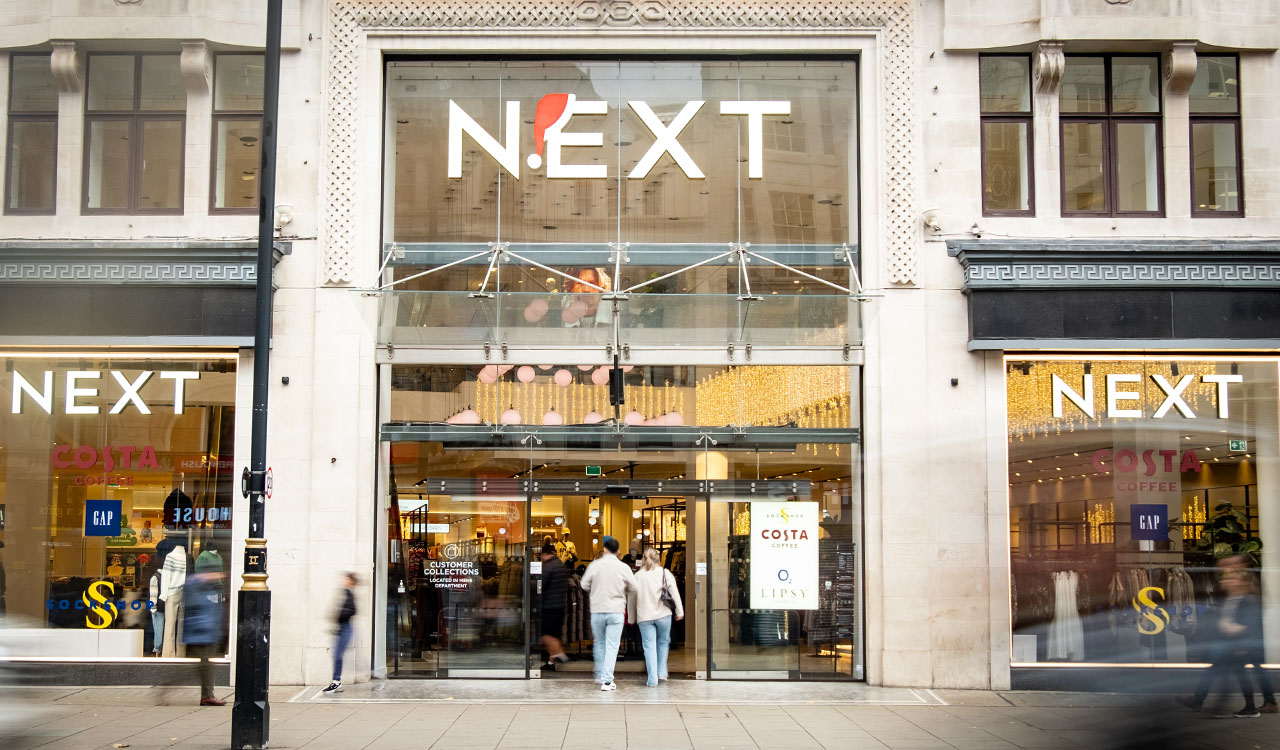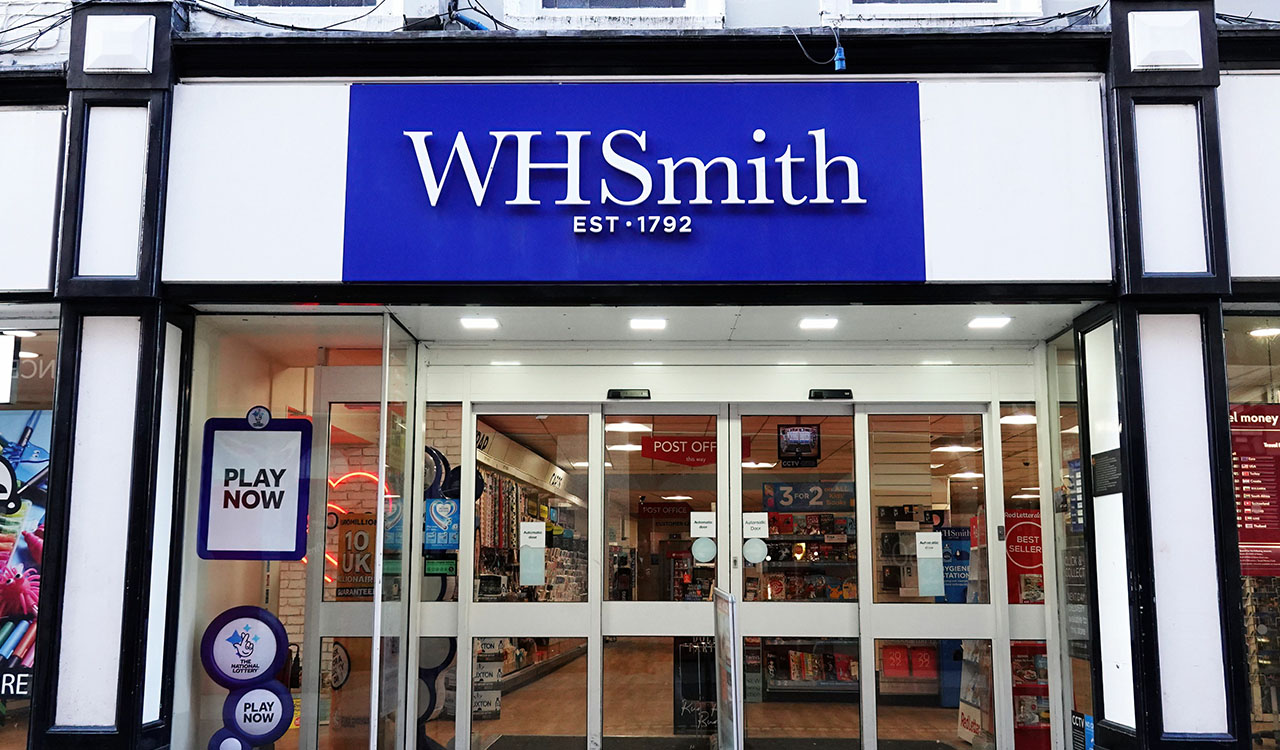Next retail, the multi-brand fashion and homewares retailer, has become the unrivaled champion at making the mundane exciting. Think Gap Inc. in its heyday. Not only has the U.K. retailer used its magic formula to consistently demonstrate remarkable success in an industry known for its volatility, but its stock is riding at an all-time high and its normally glass-half-empty boss Lord Simon Wolfson has even been quite cheery at recent trading updates.
Next’s sustained growth and prominence are rooted in a blend of strategic foresight, operational excellence, innovative brand integration, and a keen ability to stay on trend without ever being too trendy. CEO Simon Wolfson has been a pivotal figure in steering the company’s consistent growth and has undoubtedly been at the heart of its retail success strategy.
And he believes that after several decades of almost untroubled success (Next dates its history back to 1864 but the first branded Next retail store opened in 1982), he’s hit on a new retail success strategy to perform even better. Not only that, his company has been snapping up a range of fashion and home brands and he has pledged to expand overseas to try and crack a market that has so far proven underwhelmed by Next’s offer – the U.S.
Simon Woolfson Drives Impressive Success
Next offers good quality basic apparel and homewares, with fashion covering everything in womenswear, menswear and kids across jeans, chinos, T-shirts and tops, to dressy eveningwear, office wear, coats and other wardrobe staples. Without an obvious direct U.S. comparison, its offer straddles Gap and Banana Republic, with a slight nudge towards increased premium offers but with pricing that remains accessible.
Next’s sustained growth and prominence are rooted in a blend of strategic foresight, operational excellence, innovative brand integration, and a keen ability to stay on trend without ever being too trendy. CEO Simon Wolfson has been a pivotal figure in steering the company’s consistent growth and has undoubtedly been at the heart of its success.
And that keeps on coming. Next upped its profit guidance for the year again as sales jumped in its third quarter due to the early cold snap. Sales at the chain rose 7.6 percent over the prior year for the 13 weeks to Oct. 26, 2.6 percent above its guidance for the quarter. Total U.K. sales climbed 5.8 percent for the period, while total U.K. online revenues were up almost 8 percent. As a result, Next raised its profit guidance for the full year from $1.24 billion to $1.26 billion.
It also forecast sales to hit $7.84 billion in its full-year results, a rise of 7.4 percent from last year, as it upped its fourth-quarter sales guidance from a 1 percent rise to 3.5 percent. Woolfson’s approach to balancing traditional retailing with digital innovation has kept the company resilient in challenging times.
Space and Place
While the brand’s apparel may not raise the pulse, the retailer has been consistently innovative and a pioneer in how and where it operates. For example, it has largely abandoned the high street for out-of-town retail parks long before many fashion retailers emigrated to the enclave of DIY and appliance stores.
Next’s real estate strategy has been a cornerstone of its success. It adopted a disciplined approach to its physical footprint, focusing its investment on flagship stores and retail parks. These larger-format stores often include a mix of fashion, homewares, and lifestyle products, creating a one-stop shopping destination that appeals to a broad customer base. Next has also been ruthlessly effective in blending its brick-and-mortar presence with its online operations. Its stores, many with easy access and free parking, which is a rarity in the U.K., also serve as click-and-collect points. The company’s online platform, Next Directory, has evolved from a (somewhat famous and coveted) mail-order catalog to a sophisticated online marketplace.
Cost Control Focus
One of Next’s key strategies is its meticulous focus on cost control and inventory management. By leveraging advanced data analytics, the company ensures that stock levels align closely with demand, reducing the risk of overstocking or understocking. This efficiency extends to its supply chain management, where Next has built strong relationships with suppliers to ensure quality and reliability at competitive prices.
Bright Horizon
The usually cautious, dare we say downbeat Wolfson has spent much of the past 12 months calling 2024 the start of a “new era” after determining that Next’s “magic formula” initiated in 2017 had stopped working.
He feels the horizon now looks somewhat brighter for three reasons: new brands and new territories, growing sales from its infrastructure business Total Platform, and equity investments in fashion brands such as Reiss, FatFace and homewares/furniture brand Made, each giving Next the opportunity to reach a wider audience.
He believes that he can take the Next brand to “another level” by “backing newness with conviction, giving our customers a genuine breadth of choice, and delivering better, more aspirational levels of quality,” while also developing new brands like Love & Roses and Friends Like These in-house.
IP and Third-Party Deals
Next is looking to grow through acquiring the IP of third-party brands like Cath Kidston and Made.com, which it currently operates as independent licensing businesses. Wolfson is also pursuing licensing agreements with other third-party brands, like Laura Ashley, Reebok, and Bath & Body Works. These partnerships combine Next’s specialist sourcing and technical skills with the individual brand’s heritage and identity.
It has also inked deals with Superdry and AllSaints in kidswear, and French Connection and Clarke & Clarke in home, bringing a more diverse choice underpinned by their own branded staples. Next recently partnered with The Cotswold Company to launch the homeware brand’s ranges online and has rolled out its premium online fashion platform, Seasons, selling a selection of premium and luxury brands, seeking to build on the success of the Reiss acquisition.
Next is planning to grow its third-party business by creating a dedicated ecosystem for higher-end labels, including Ganni, Marc Jacobs and Tory Burch — and recently snapped up a 16 percent stake in homeware and lifestyle brand Rockett St. George following a series of homeware and clothing collaborations. Meantime, health food and supplements retailer Holland & Barrett has opened new concessions inside three stores.
The list goes on, and on, and on. With its larger stores, there is a very real possibility that Next will be more akin to a department store rather than a fashion brand before long.
International Growth
Another big avenue for growth is overseas expansion, with Next conceding that it has performed stronger closer to home in Europe and in the Middle East, where there is stronger brand awareness, and it is able to distribute goods on shorter lead times and at competitive prices. Next is looking to franchise and wholesale relationships in India and other Asian countries and has embarked on a “very encouraging trial” with Nordstrom. It has apparently agreed on terms with another undisclosed U.S. retailer and is in talks with others, while its goods are already available online through its dedicated U.S. website.
Next’s third expansion avenue, Total Platform, will grow through outsourcing its infrastructure to other businesses. It uses this infrastructure within its invested brands so it can benefit from their growth and Next will inevitably snap up more businesses to plug into the platform.
One of the most remarkable things about Next is that in an industry and a sector known for volatility, it has managed to chart an incredibly smooth passage. While rivals such as department store groups Marks & Spencer and John Lewis have had to endure challenging years, and others have disappeared, Next has rarely made a misstep.
It has doubled down on quality, raising prices but remaining accessible for the middle market, and its operational and strategic excellence show few signs of waning. If retail is detail, Next has consistently been the king of doing the basics brilliantly, time after time.
Its big challenge is to develop as an international brand. Next’s collaborative, multi-brand success is almost certainly driven by the halo effect some of those niche labels bring to the group. The Nordstrom trial has been relatively small scale to date but if it does ramp up, don’t expect to notice. No one does off-the-radar, understated success like Next.





